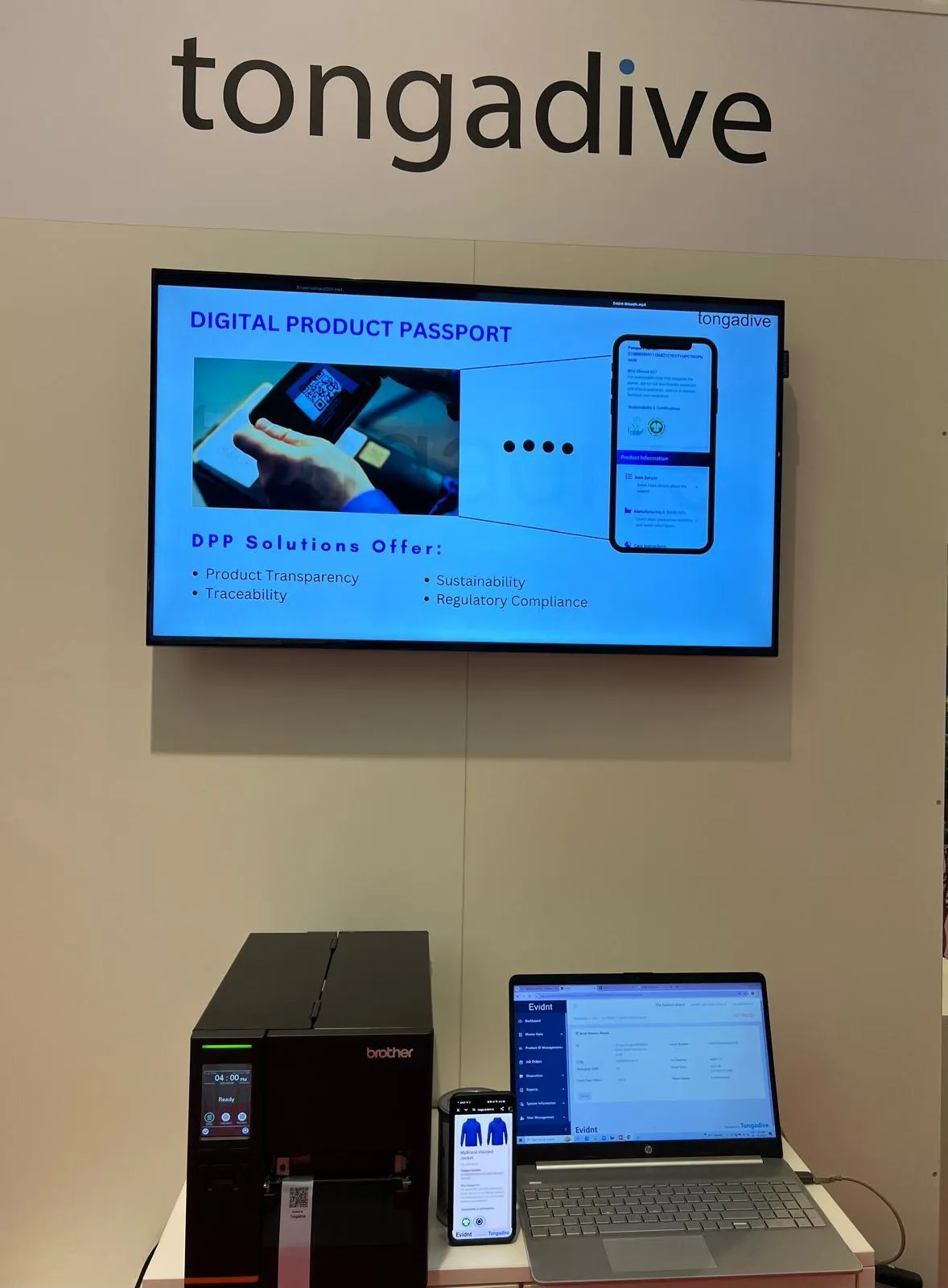Anyone who’s ever watched The Devil Wears Prada, House of Gucci, Pret-a-Porter – or any of the myriad of fashion industry films – will know that fashion is serious business. In 2023, the global fashion industry was valued at an estimated $1.7 trillion. Clothing production doubled from 2000 to 2014, and the number of garments purchased per capita between 2000 and 2014 increased by about 60%.
Fast fashion has played a significant role in the industry’s growth, with compressed production cycles and up-to-the-minute designs meaning shoppers can refresh their wardrobes quickly and cheaply. The fast fashion business model has also created problematic social impacts on workers in manufacturing countries, and has led to significant overproduction issues, as evidenced in the drastic increase in seasonal fashion trends compared to the early 2000s.
The overproduction of products, rising levels of materials usage, including plastics, and limited reuse of fashion items all contribute to the problematic context of the fast fashion industry. Fast fashion generates significant waste, with a high percentage of items being disposed after minimal wear and over 60% ending up in landfill or incinerated each year. In fact, total greenhouse gas emissions from textiles production are estimated at 1.2 billion tonnes a year, and in the EU, the consumption of textiles now accounts for the 4th highest negative impact on the environment and climate, and the 3rd highest for water and land use.
That said, growing awareness and concerns over sustainability in the fashion industry are starting to change perceptions and leading to demands for greater transparency, with consumers and regulators alike taking action to both better understand the complex, global textile value chain and combat excess waste. As such, Lee Metters, Group Business Development Director, Domino Printing Sciences and Regina Wilhelm, Environmental Manager, Brother, consider the role that Digital Product Passports can play in addressing sustainability issues, and the benefits for fashion brands in implementing item-level serialisation.


Tackling waste through regulatory change
In March 2022, the European Commission published its Sustainable and Circular Textile Strategy, which foresees a near future where:
“textile products placed on the EU market are long-lived and recyclable, to a great extent made of recycled fibres, free of hazardous substances and produced in respect of social rights and the environment. Consumers benefit longer from high quality affordable textiles, fast fashion is out of fashion, and economically profitable re-use and repair services are widely available. In a competitive, resilient and innovative textiles sector, producers take responsibility for their products along the value chain, including when they become waste. The circular textiles ecosystem is thriving, driven by sufficient capacities for innovative fibre-to-fibre recycling, while the incineration and landfilling of textiles is reduced to the minimum.”
Part of the EU’s implementation for this strategy includes its Ecodesign for Sustainable Products Regulation (ESPR), which involves the development of “binding product-specific ecodesign requirements to increase textiles’ performance in terms of durability, reusability, reparability, fibre-to-fibre recyclability and mandatory recycled fibre content, to minimise and track the presence of substances of concern and to reduce the adverse impacts on climate and the environment”.
Alongside these EU-wide regulatory developments, individual member states have also taken steps to make fast fashion less attractive, in moves including France’s recent proposal for an environmental surcharge on low-cost fashion items.
Underpinning these regulations is the Digital Product Passport (DPP), a mandatory electronic record that will enable all stakeholders in the textile supply chain to access “clear, structured and accessible information on the environmental sustainability characteristics of products”. The final date for implementation of the DPP is expected sometime between 2026 and 2030. While details of the full requisite of data to be included in the DPP is evolving, at a minimum it is likely to include recorded product data from across the supply chain including raw material sourcing and manufacturing processes, as well as additional information on repairability, recyclability, and end-of-life options.
Data carriers to facilitate DPP
In essence, the aim of the DPP is to create a digital twin of a physical product and record event, transactional, and sustainability-based data from across the product’s lifecycle. For a DPP for fashion items to work, it will need to be accessible via a data carrier that is cost-effective, accessible to all key stakeholders including manufacturers, importers, retailers, and consumers, and capable of lasting the full lifetime of the product. Potential applications could include a QR code, RFID tag, or other technology such as near-field communication (NFC) tagging. Of the different technologies available, we see the QR code as the most obvious choice, given its relative cost-effectiveness and its compatibility with consumer mobile phones as well as supply chain scanners.
One of the most seamless and globally recognised solutions would be a QR code powered by GS1, a single-barcode solution designed specifically to provide access to digital information about a product to multiple sources, and which can be readily updated without necessitating a change to the final code. As an international standards organisation, GS1 is an instrumental partner for those in the textile supple chain – with standards and services that empower all parties to identify, capture and share key data that will help determine a product’s sustainability credentials.
In terms of application, GS1 QR codes could be applied to existing item care labels rather than removable price tags – either printed or laser coded, depending on the material used – helping them to last the full lifetime of a product. Alternatively, using direct-to-film applications, the QR code could be designed and printed on specialist films and transferred directly on to the garment using a heat press – or indeed, sewn directly onto the garment or even integrated within the clothing’s design.

DPP Solution for printing QR codes on clothing care labels, developed by Tongadive, printed by Brother
The benefits of QR codes powered by GS1 within unique item serialisation
Despite the relative affordability of printed QR codes, implementing DPPs for textiles will likely incur a cost for clothing manufacturers – this is an unavoidable, as the move is governed via regulation, and will force the industry to align. While item-level serialisation of products is unlikely to be a requirement of the DPP for textiles, the additional capability is a minor incremental cost that offers the greatest opportunity to unlock additional benefits from this compliance obligation, and will allow brands to future proof their operations, should serialisation be added as an additional requirement.
These benefits include, but are not limited to:
- Providing consumers with different experiences before and after a product purchase – from pre-shipping promotions to after-sales marketing a year or more after the original purchase;
- Offering additional services to promote the longevity of a product, such as a number of free repairs included in the original item price;
- Access to digital deposit return schemes for clothing (e.g. to improve recycling rates or allow money back when an item is returned to store);
- For higher value items, the guarantee of authenticity by creating a unique identifier that can be used to track the product throughout its lifecycle, minimising risk of fake or counterfeit products being inadvertently purchased.
Indeed, digital ID solutions provider Kezzler recently highlighted that some brands are already implementing QR codes powered by GS1 with serialisation – without a specific current use. By adopting item-level serialisation now, these brands are developing an infrastructure that is sure to support any data requirements mandated by the final DPP regulation. By serialising items, brands can also spread the cost of implementation; and will be ahead of the curve to explore and capitalise upon alternative uses further down the line.
Final Thoughts: Recycling to Tackle Excess Waste
The textile value chain is complex – and one area where the industry is lacking data to effect sustainable change is in recycling. While clothing made from recycled fibres could help combat the waste issue, the means to track garments and collect those suitable for recycling is missing. Moreover, the clothing industry suffers the same issue as other packaging materials – the waste stream is contaminated, with little or no way to identify where contamination is present.
Sharing data on the volume, location and composition of waste generated could help the industry take vital steps in evaluating the full potential of textile recycling – with the DPP playing a key role in facilitating data sharing and traceability.
Fashion is big business – but it is also a big contributor to waste. As the fashion industry is embedded in a complex system of global value chains, it requires industry-wide efforts to rethink extraction, production, and distribution channels, and bring about change in a transparent way.
The overall target of the industry is to drastically reduce its carbon footprint and extend the life of clothing. Brands taking step to achieve this goal can prove their actions by implementing the DPP early on, and those that do will also be most prepared to turn their compliance obligation into a real business opportunity.